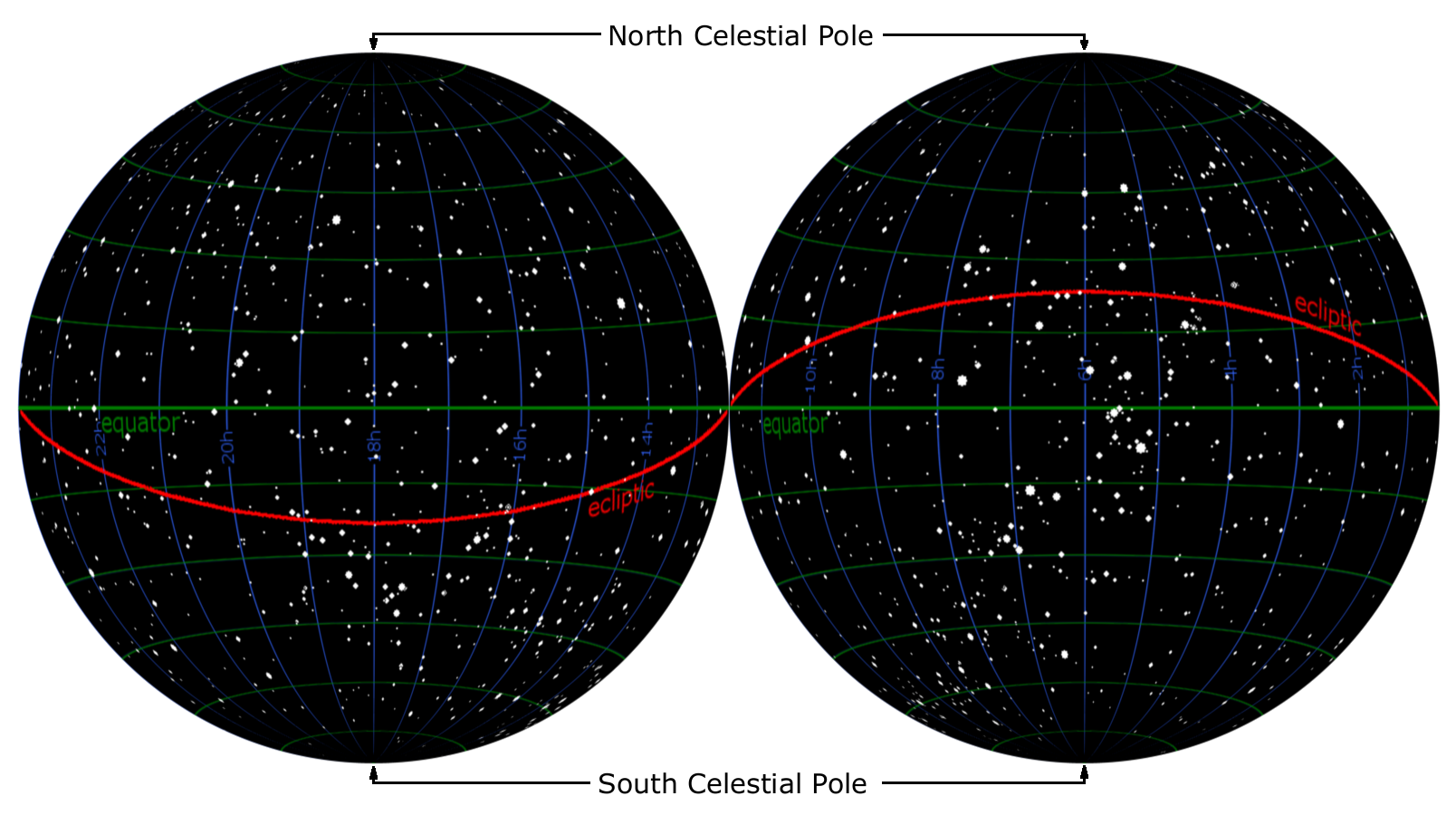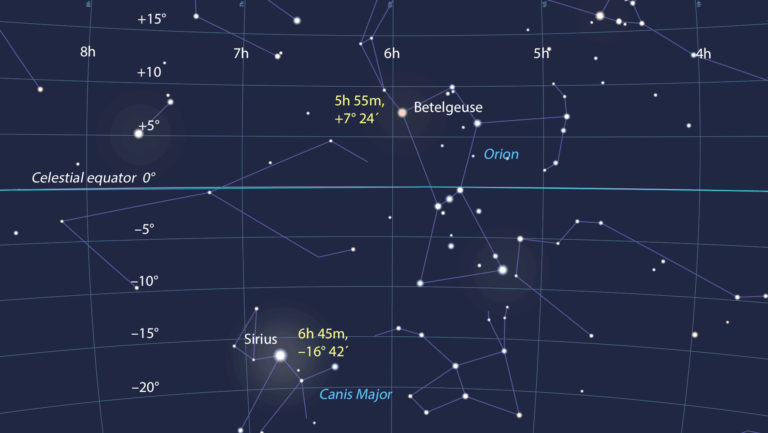

For example, if the Moon passes into the shadow of Earth and disappears from view, this event is called a lunar eclipse. If one object moves into the shadow of another, the event is an eclipse. However, if two celestial bodies attain the same declination at the time of a conjunction in right ascension (or the same ecliptic latitude at a conjunction in ecliptic longitude), the one that is closer to the Earth will pass in front of the other.

In the night sky over ESO's Very Large Telescope (VLT) observatory at Paranal, the Moon shines along with two bright companions: Venus and Jupiter. In the vast majority of such cases, one of the planets will appear to pass north or south of the other. At the time of conjunction – it does not matter if in right ascension or in ecliptic longitude – the involved planets are close together upon the celestial sphere. However, at triple conjunctions, it is possible that a conjunction only in right ascension (or ecliptic length) occurs. Conjunction in right ascension and conjunction in ecliptic longitude do not normally take place at the same time, but in most cases nearly at the same time. At such conjunction both objects have the same ecliptic longitude. However, there is also the term conjunction in ecliptic longitude. This is called conjunction in right ascension. More generally, in the particular case of two planets, it means that they merely have the same right ascension (and hence the same hour angle). Passing close Ī conjunction of Mars and Jupiter in the morning of, when, about an hour before sunrise, five of the Solar System's eight planets and the Moon could be seen from Cerro Paranal, Chile. The conjunction symbol is not used in modern astronomy. The astronomical symbol for conjunction is ( Unicode U+260C ☌). Conjunctions between two bright objects close to the ecliptic, such as two bright planets, can be seen with the naked eye. A conjunction is an apparent phenomenon caused by the observer's perspective: the two objects involved are not actually close to one another in space. Ĭonjunctions involve either two objects in the Solar System or one object in the Solar System and a more distant object, such as a star.

A related word, appulse, is the minimum apparent separation in the sky of two astronomical objects. When two objects always appear close to the ecliptic-such as two planets, the Moon and a planet, or the Sun and a planet-this fact implies an apparent close approach between the objects as seen in the sky. In astronomy, a conjunction occurs when two astronomical objects or spacecraft have either the same right ascension or the same ecliptic longitude, usually as observed from Earth. The two brightest objects in the night sky
Right ascension definition astronomy license#
All glossary terms and their definitions are released under a Creative Commons CC BY-4.0 license and should be credited to "IAU OAE".Visual conjunction between the Moon and the planet Venus.

Right ascension definition astronomy full#
You can find a full list of credits here. The terms and definitions were chosen, written and reviewed by a collective effort from the OAE, the OAE Centers and Nodes, the OAE National Astronomy Education Coordinators (NAECs) and other volunteers. The OAE Multilingual Glossary is a project of the IAU Office ofĪstronomy for Education (OAE) in collaboration with the IAU Office of Astronomy This term and its definition is still awaiting approval The longitude angle is typically stated as a time, with 24 hours corresponding to 360 degrees. This longitude is called right ascension. As the analog of the Greenwich meridian on Earth, choose the March equinox, where the Sun's apparent path crosses the celestial equator in spring. Define longitude and latitude on the resulting sphere so that each fixed star position has constant longitude and latitude values. The points directly above Earth's equator form the celestial equator, the point directly above Earth's geographic North Pole is the celestial North Pole (similarly for the South Pole). Description: Right ascension is a celestial coordinate in the equatorial coordinate system that is fixed relative to the fixed stars (the second coordinate is declination).


 0 kommentar(er)
0 kommentar(er)
